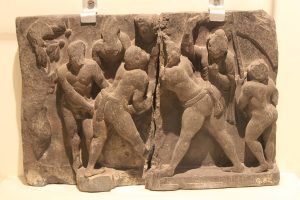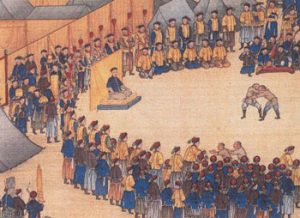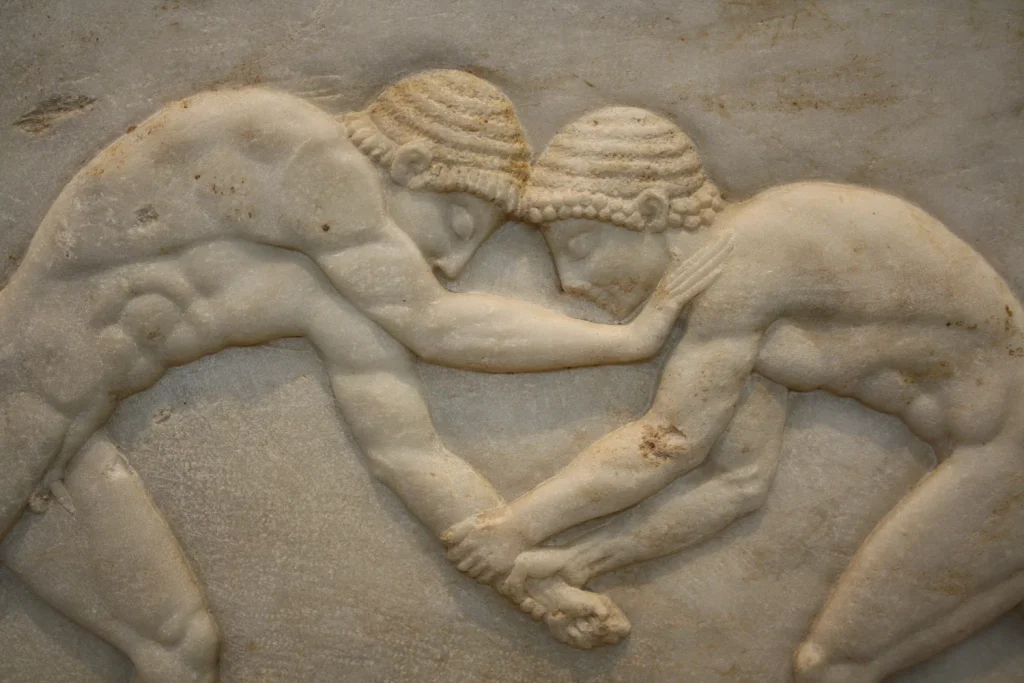Wrestling, one of humanity’s oldest forms of combat and competition, traces its roots back to the earliest civilizations. From the cave paintings that depict grappling figures to the amphitheaters of ancient Greece where it was celebrated as an Olympic sport, wrestling has always been more than just a test of strength, it’s a storied art form, rich in technique and tradition.
Over the centuries, it has evolved, embracing various styles and forms across different cultures, from the traditional Japanese sumo to the folk wrestling styles of rural communities. In the modern era, wrestling has found a new home in arenas around the world, captivating audiences with its blend of athleticism, theatrics, and drama.
It’s a sport where legends are made, where characters larger than life battle not just for titles, but for the enduring legacy in the annals of history. Despite its evolution, the core of wrestling remains – a visceral, primal contest of physical and mental endurance, strategy, and resilience, resonating with the human spirit of competition and triumph.
The Ancient Roots of Wrestling
Believe it or not, wrestling transcends the realm of modern sports entertainment, anchoring its roots deep in the annals of prehistory. It’s not a mere product of recent centuries, but a legacy that harks back to the very dawn of human civilization. The earliest evidence of this time-honored sport is etched into the walls of caves in France, with paintings dating back a staggering 15,000 years. These primordial illustrations are more than just artistic expressions; they are historical testimonies, capturing figures locked in wrestling poses. This artistic evidence underscores the sport’s deep-seated presence in our ancestors’ lives.

Wrestling in these ancient times was far more than a competitive pastime or a source of entertainment. It was an essential skill, a means of survival in a world where physical prowess often determined one’s ability to protect, hunt, and sustain oneself and their community. This form of combat transcended the bounds of mere sport; it was interwoven into the cultural and social fabric, holding significant value in rites of passage, spiritual ceremonies, and community gatherings.
In many ancient cultures, wrestling was not just a test of strength and skill but a revered art form, held in high esteem. It was a discipline that taught not only physical techniques but also instilled values of honor, respect, and perseverance. The sport was a way to cultivate and demonstrate virtues such as bravery, resilience, and tactical thinking. It was common for communities to gather and watch wrestlers compete, not merely for entertainment, but to witness a display of cherished cultural values and personal virtues.
Thus, wrestling’s journey through time is not just a chronicle of a sport but a narrative deeply entwined with human history and evolution. From prehistoric cave art to the grand stages of today, wrestling has been a constant companion in our collective journey, evolving yet holding steadfast to its core essence – a symbol of human strength, skill, and spirit.
Wrestling in Antiquity

The ancient Greeks elevated wrestling to a high art, incorporating it into their legendary Olympic Games. It wasn’t just about brute strength; it was about finesse, tactics, and endurance.
The Roman Empire also embraced wrestling, although their version was more brutal, often ending in serious injury or death.
Wrestling Through the Ages
As civilizations evolved, so did wrestling. Each culture added its own rules and styles. For instance, the Middle Ages saw the rise of folk wrestling in Europe, with each region developing its own unique style.
These ranged from the Cornish style in England to the Glima style in Scandinavia.
Modern Wrestling
As we fast-forward to the 19th century, wrestling undergoes a transformative journey, morphing into a form that more closely resembles the sport as we know it in the contemporary era. This period marks a significant turning point in the history of wrestling, characterized by a shift from varied traditional styles to a more standardized format.
The late 1800s were pivotal in wrestling’s evolution, a time when the sport began to adopt a structured approach. This era witnessed the introduction of formalized rules, which were crucial in creating a level playing field and ensuring fair competition. These rules were not just arbitrary guidelines but a foundational framework that allowed wrestlers from different regions and backgrounds to compete under a universal set of standards.
Another significant advancement during this time was the establishment of weight classes. Prior to this, wrestling matches often pitted opponents of vastly different sizes against each other, which could lead to uneven and sometimes dangerous contests. The introduction of weight classes was a game-changer; it not only enhanced the safety of the sport but also introduced a new strategic element, as competitors now faced opponents of similar size and strength. This categorization fostered a more skill-based and tactical form of competition, emphasizing technique over sheer size and power.
The culmination of these developments was wrestling’s inclusion in the first modern Olympic Games in 1896. This was a monumental milestone for the sport, symbolizing its global recognition and prestige. Olympic inclusion not only provided wrestling with a larger platform but also encouraged further standardization and refinement of rules and practices. It was a testament to wrestling’s enduring appeal and adaptability, showcasing its ability to evolve while retaining its core essence as a test of physical prowess and strategic acumen.

As a result, the 19th century stands out as a transformative era for wrestling, marking its transition into a modern sport. These changes laid the groundwork for the diverse styles and international competitions we see today, from freestyle and Greco-Roman in the Olympics to the various professional and amateur forms practiced around the world.
The sport’s evolution has given rise to a rich tapestry of styles, each with its own unique characteristics and cultural significance. This diversity not only showcases wrestling’s adaptability but also its universal appeal.

One of the most striking examples of wrestling’s global diversity is Sumo in Japan. This ancient form of wrestling is steeped in tradition and ritual, dating back centuries. Sumo is more than a sport in Japan; it’s a cultural institution, deeply intertwined with Shinto religious practices. The matches, characterized by their distinctive rules and the iconic attire of the wrestlers (rikishi), take place in a dohyo, a sacred ring where strength and technique are displayed. Sumo wrestlers, revered as athletes and cultural icons, undergo rigorous training and adhere to a strict lifestyle, reflecting the sport’s discipline and the cultural importance it holds in Japanese society.
In stark contrast to the ceremonial nature of Sumo is the high-octane world of Lucha Libre in Mexico. Known for its colorful masks, dramatic storytelling, and aerial maneuvers, Lucha Libre is a spectacle of athleticism and entertainment. The luchadores (wrestlers) don masks and adopt personas, engaging in a theatrical display of good versus evil. This style of wrestling is deeply embedded in Mexican culture, with its roots tracing back to the early 20th century. Lucha Libre goes beyond mere sporting competition; it’s a form of storytelling and a celebration of Mexican heritage and identity.
Moreover, wrestling’s global presence is further exemplified by other styles like the traditional Mongolian wrestling, known as Bökh, which plays a central role in the Naadam Festival, and the Senegalese wrestling, or Laamb, which combines wrestling with music and dance, reflecting the rich cultural heritage of Senegal.
Wrestling Today
In the present day, wrestling stands as a multifaceted global phenomenon, a testament to its ability to transcend cultural and geographic boundaries.
In the Western world, wrestling has evolved into highly organized professional and amateur circuits. Professional wrestling, popularized by organizations like WWE, combines athletic prowess with theatrical elements, creating a unique entertainment experience that captivates audiences worldwide. On the other hand, amateur wrestling, including styles like freestyle and Greco-Roman, remains a staple in international sports competitions, including the Olympics, where it continues to be a showcase of skill, strength, and national pride.
Today’s wrestling landscape is a mosaic of styles, each contributing to the sport’s rich and varied narrative. From traditional practices rooted in centuries-old traditions to modern interpretations that blend athleticism with entertainment, wrestling’s diversity is a reflection of its ability to resonate across different cultures and communities. This global phenomenon not only entertains and inspires but also serves as a bridge, connecting people from different walks of life through a shared appreciation for the art and discipline of wrestling.
